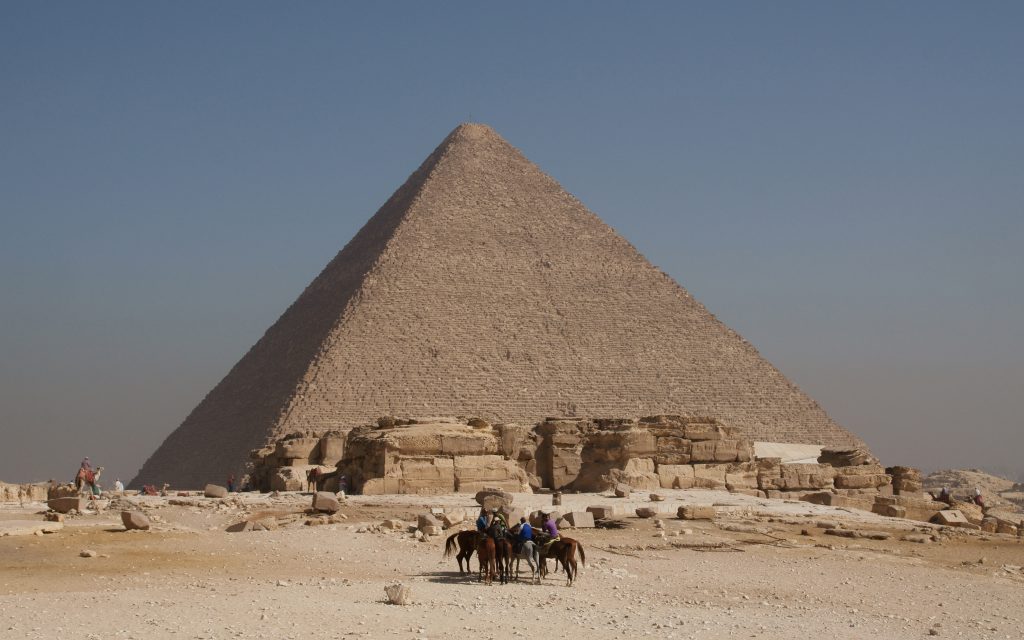I think that it is a given that humans have a bit of a fascination with death and everything that comes after, that is, if one even believes that there is anything that comes after death. In fact, one can find that this fascination can even be seen in ancient human societies, and of all of them there is none that shows more fascination with the dead than the great society of ancient Egypt, which built great monuments and sculptures to the dead, wrote guides for the dead to use on their journey through the afterlife, and mummified bodies so that the “Ka,” which was their concept of the soul, could travel and exist in the afterlife.

One of the most well known things about the ancient Egyptians are their mummies; but what exactly are mummies? They are not the man killing monsters that Hollywood films have come to portray them as, but are rather simply the preserved and mummified remains of a person. This leads us to the next question: why mummify the dead? The reason the dead where mummified is simple: without the body, the Ka cannot exist and the Ka is what allows one to travel and live in the afterlife.
The Ka itself is very much like the Christian concept of the soul, which is believed to go either to heaven or hell after death.1 According to Egyptian culture and religion, the Ka is the spirit-body. However, in order for it to exist, it must also have a physical body. So to insure that the dead would be able to go to the afterlife, the body was mummified so that it might stay behind as the Ka moved on to the afterlife.
While the Egyptians mummified the bodies to be sure that the Ka had a physical form in which it could reside, there was still an issue: tomb raiders. Tomb raiders plundered tombs and took the bodies of the dead, or defiled them, causing the Ka to become separated from its physical form. It is important to keep in mind that this was not really an issue for the poor members of society, but for the elite and pharaohs of ancient Egypt this was quite important.2
It is for this reason that the high elite of Egyptian society—mostly the pharaohs—had statues made and sculpted in their image. They believed that, if their tomb was raided and something happened to their body, the Ka simply moved from the body to the statue, which became the new physical form in which the Ka resided.3
Egyptian funerary texts are another aspect of the Egyptian culture that exhibits a fascination for the dead in ancient Egyptian culture. The funerary texts, called “Per en Bru” by the Egyptians, roughly translates to the Coming of Days. The texts themselves were very unique, each created with the intent of helping the deceased travel through the afterlife.4 In a sense, funerary texts were a kind of general guide or handbook, which consisted of a multitude of spells and information on the afterlife that was believed to help the Ka on its way to the new life.

Another thing that shows how fascinated the Egyptians were with the dead can be found in urns and canopic jars. It was not until the first explorations of the Egyptian tombs that archaeologist came to find the canopic jars, and it was not until they were opened that archaeologists learned that within these jars were the preserved organs of the dead.5 It was only due to the discovery of the funerary texts that archaeologists learned the reason for this. What was learned was that the organs were placed into the jars so that the Ka would be able to take them to the afterlife. However, not all organs were preserved in these jars, and not all of the ones that were preserved served a practical use. One example of this is the heart. In fact, the funerary texts detail how the Ka would carry the heart to Anubis, who would then place it on a scale to be weighed against a feather of Ra. Once place on the scale, the trial of judgement would begin; now there are some important things to know about this trial; first, the feather of Ra symbolizes purity and perfection; second, the heart represents the soul or Ka, so when the heart was placed on the scale, if it weighed more than the feather, that meant that the Ka was not pure, and Anubis would have his beast devour the heart, thus erasing the Ka. However, if the heart weighed less than the feather, that meant that the Ka was pure and could move on to its new live in the afterlife.
- Erik Hornung, The Ancient Egyptian Books of the Afterlife, David Lorton, translator (Cornell University Press, 1999), 154. ↵
- Jan Assmann, Death and Salvation in Ancient Egypt (Cornell University Press, 2005), 105. ↵
- Henri Frankfort, Ancient Egyptian Religion: An Interpretation (Courier Corporation, 2012), 96. ↵
- John H. Taylor, Death and the Afterlife in Ancient Egypt (University of Chicago Press, 2001), 196. ↵
- Ann Rosalie David, Handbook to Life in Ancient Egypt (London: Oxford University Press, 1999), 152. ↵



87 comments
Elizabeth Garibay
Although Mummies are kind of a funny topic to read about, I still very much enjoyed it. The author does a good job of introducing and jumping right into the story. I had already knew some information about the history of Egypt including their Gods, customs and pyramids, but I never knew about the process of mummification. I found it interesting how the Egyptians interpreted death. The article was overall well put together and organized.
Anayeli Prieto
Great Artlicle! I was wondering however, if everyone who passed away, also this funeral teqnique or if it was just for the elite and royalty. Its also very fascinating to know that they placed the heart of the person who passed in a jar! Would the jar decompose the heart? and where would they place the jar? this article does leave you wanting for more! it definetly seems like a topic that i would want to look into for more information. i am really amazed with different cultures and beliefes that they use for everyday life.
Nataly Solis Chavez
Astounding work! I honestly enjoyed reading your work because of your writing style and how you included your own personal opinion, I can appreciate that and I think it’s what made this piece that much more intriguing. Very valuable comparisons between perspectives of after life between the Egyptian culture and Christian beliefs! I learned a great deal, thank you.
Sam Vandenbrink
Mummies are sort of a funny thing to think about. But the author does and excellent job leading into the article. He doesn’t focus on the mummies or mummification process, as much as the rest of the Egyptian process. Post mummification where the tomb raiders robbed the bodies of the rich, the article says the robbers would make it so that the Egyptians couldn’t go into a past life because they would ruin Ka disconnecting it from the body, VERY interesting would love to read more!
Alexis Soto
This was an enjoyable article to read. I had known that the ancient Egyptians places great importance on death and the afterlife considering we learn of the mummies and tombs created by them. However I had never actually took the time to read more closely about it to determine their view of the afterlife. Thanks to this reading I have a greater understanding of Ancient Egyptians and their culture. Its interesting to note since ancient times humans have always been curious about death and what comes after it.
Yesenia Cardenas
For the longest time I was very curious why Egyptians created statues and pyramids. It would make sense that Egyptians put so much effort in preserving the spirit.
Joshua Tinajero
It is amazing to read about the extensively practiced process of preserving the organs of the dead through the “ka” in order to lead these soles to the afterlife. This process is definitely one of the most unique ways to reach the afterlife from a religious perspective. Great job on the article!
Victoria Sanchez
Very interesting and well written article! I enjoy learning about ancient Egypt and their traditions of mummification, and I definitely learned a lot from you article! I knew that ancient Egyptians believed in an afterlife for their “Ka”, but I didn’t know that the reason behind mummifying bodies was the belief that the “Ka” couldn’t exist without the body. I also didn’t know the reason that they preserved their organs. The background you gave about the heart and the belief that Egyptians had about the organ’s ability to grant access to the afterlife was very interesting! Great job!
Mikey W
Good parallels between Christian’s belief of the soul and the Egyptians Ra. I never knew about the feather of Ra. Fairly sure my heart is heavier than a feather. Guess I’m out of luck.
L Love
Well written article. Very interesting especially about the Ka and the urins. Learned a lot about something I knew so little about. Looking forward to reading some more of your articles.